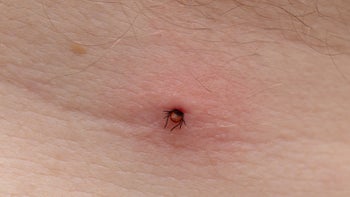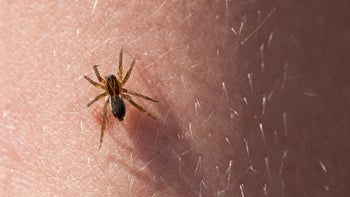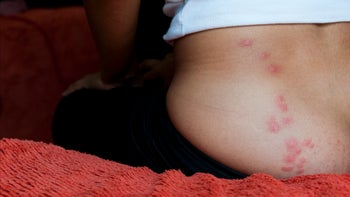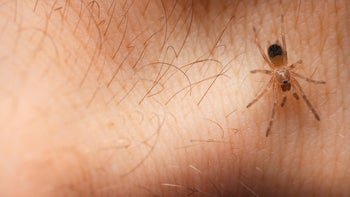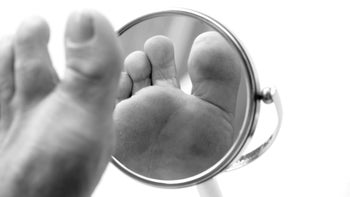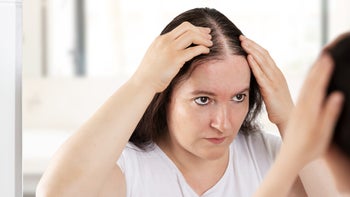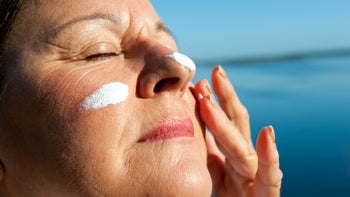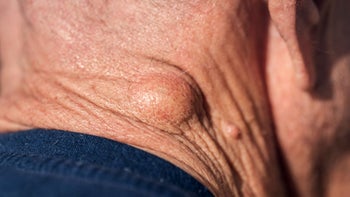
What Causes Nail Pitting, and Do You Treat It?
Key takeaways:
Nail pitting is when the surface of the nail develops small dents or pits. Damage to the nail matrix, where the new nail grows from, can lead to nail pitting.
Nail pitting can be normal. But it may also be a sign of a medical condition like psoriasis, alopecia areata, or eczema.
Treatment for nail pitting depends on what’s causing the nail changes. Steroid injections, laser treatments, and other medications can all treat nail pitting.

It’s easy to take your fingernails for granted, but they play an important role in protecting the tips of your fingers and allowing you to pick up small objects. And sometimes, changes in the appearance of your fingernails can give you important clues about your overall health.
For example, some nail changes can be a sign of a new medical condition. Nail pitting — or small pits in the nail — can be normal, but it can also be a symptom of some autoimmune conditions.
If you’ve noticed new nail pits, here’s what it could mean and what you should do next.
Search and compare options
What is nail pitting?
Nail pitting is a nail change in which small dents develop across the surface of the nails. The dents or “pits” are usually quite small — about the size of a pinhead. Nail pitting can happen when there’s damage to the nail matrix. The nail matrix is made of special cells that create new fingernails or toenails. You can see part of your nail matrix. The lunula, which is the white crescent at the base of your nail, is part of your nail matrix. But the rest of your matrix isn’t visible because it’s covered by the base of your nail and your cuticle.
What can cause nail pitting?
Medical conditions that can damage nail matrix cells cause nail pitting. Some medical conditions cause inflammation in the cells of the nail matrix. This inflammation damages the cells so they can’t produce normal nails. But nail pitting can also develop for no reason.
“Nail pitting can sometimes be seen in people as a normal finding, meaning it's not related to any underlying condition,” said Dr. Maria Robinson, a board-certified dermatologist and GoodRx contributor. “It can also be seen in skin conditions, like psoriasis, alopecia areata, chronic eczema, and lichen planus.”
Let’s look more closely at conditions that can cause nail pitting.
Psoriasis
Psoriasis is an autoimmune condition that can lead to thick, raised patches of skin anywhere on the body.
Psoriasis can also affect the nails, causing:
Nail pitting
Brittle nails
Color changes including white or yellow nails
Read more like this
Explore these related articles, suggested for readers like you.
“Nail pitting is the most common nail change seen in people who have psoriasis,” Robinson said. These changes can be the first — and sometimes only — sign of psoriasis. People with nail psoriasis usually also have psoriasis patches on their skin, too. But sometimes people with psoriasis only develop psoriasis on their nails.
Alopecia areata
Alopecia areata is an autoimmune condition that causes patchy hair loss. It usually affects hair on the scalp and face, but can cause hair loss on any part of the body.
And it can also affect the nails. People with alopecia areata may notice nail changes, such as:
Nail pitting
Fragile nails
Rough nails
About 30% of people with alopecia areata experience nail changes, and nail pitting is the most commonly reported change.
Eczema
Eczema, or atopic dermatitis, is a common inflammatory skin condition that causes a dry, itchy rash. People with chronic eczema can also experience nail changes, including:
Nail pitting
Horizontal lines or ridges
Texture changes, like thickened nails
Discoloration
In one study, 10% of people with eczema also develop nail changes. Nail pitting was the second most commonly reported change in nail appearance.
Lichen planus
Lichen planus is an inflammatory condition that affects the skin, scalp, and the lining of the mouth, anus, and genitals. It’s not clear why some people develop lichen planus.
People with lichen planus often develop raised, itchy bumps on the hands and legs. They also develop nail changes including:
Nail pitting
Ridges
Texture changes like rough or thin nails
Nail loss
About 10% of people with lichen planus develop nail changes. Nail changes can happen even if the skin on the hands doesn’t show signs of lichen planus.
How do you treat nail pitting?
Treatment for nail pitting depends on what’s causing the pitting. For example, people with psoriasis and nail pitting should receive treatment for psoriasis. Treatment can get psoriasis under control and ease skin and nail changes, including nail pitting.
The same is true for eczema, alopecia areata, and lichen planus. Getting treatment for the condition causing the nail pitting is often enough to stop ongoing damage to the nail matrix. Once the matrix recovers, it will start producing normal nails again, and changes like nail pitting will go away.
Some people need additional treatment to help their nail pitting. Some treatment options work directly on the nails to stop inflammation at the nail matrix. Options include:
Topical medications: Topical steroids or vitamin D derivatives can help ease nail matrix inflammation and correct nail changes.
Steroid injections: Some people may need steroid injections underneath their nails. This gets the steroids closer to the nail matrix to help ease inflammation.
Laser treatments: Laser therapy uses different wavelengths of light to help the nail matrix create new, healthy nails.
People who have isolated nail pitting — that is, nail pitting but no other signs of another medical condition — may also benefit from these treatments.
The bottom line
Nail pits are tiny dents or depressions that can develop on your nails. Nail pitting can happen for no apparent reason. But it can also be a sign of a medical condition like psoriasis, alopecia areata, eczema, or lichen planus. Sometimes nail changes are the first sign of one of the medical conditions. There are treatments that can help stop nail pits from forming including vitamin D therapy, steroid injections, and laser treatments. Treatment for medical conditions that can cause nail pitting can improve nail changes.
Why trust our experts?


References
Arnold, D. L., et al. (2023). Lichen planus. StatPearls.
Chelidze, K., et al. (2018). Nail changes in alopecia areata: An update and review. International Journal of Dermatology.
Chung, B. Y., et al. (2019). Nail dystrophy in patients with atopic dermatitis and its association with disease severity. Annals of Dermatology.
Ludmann, P. (2020). Eczema types: Dyshidrotic eczema signs and symptoms. American Academy of Dermatology Association.
Ludmann, P. (2023). Hair loss types: Alopecia areata signs and symptoms. American Academy of Dermatology Association.
Ludmann, P. (2023). What is nail psoriasis, and how can I treat it? American Academy of Dermatology Association.
Muneer, H., et al. (2023). Psoriasis of the nails. StatPearls.
Tully, A. S., et al. (2012). Evaluation of nail abnormalities. American Family Physician.







